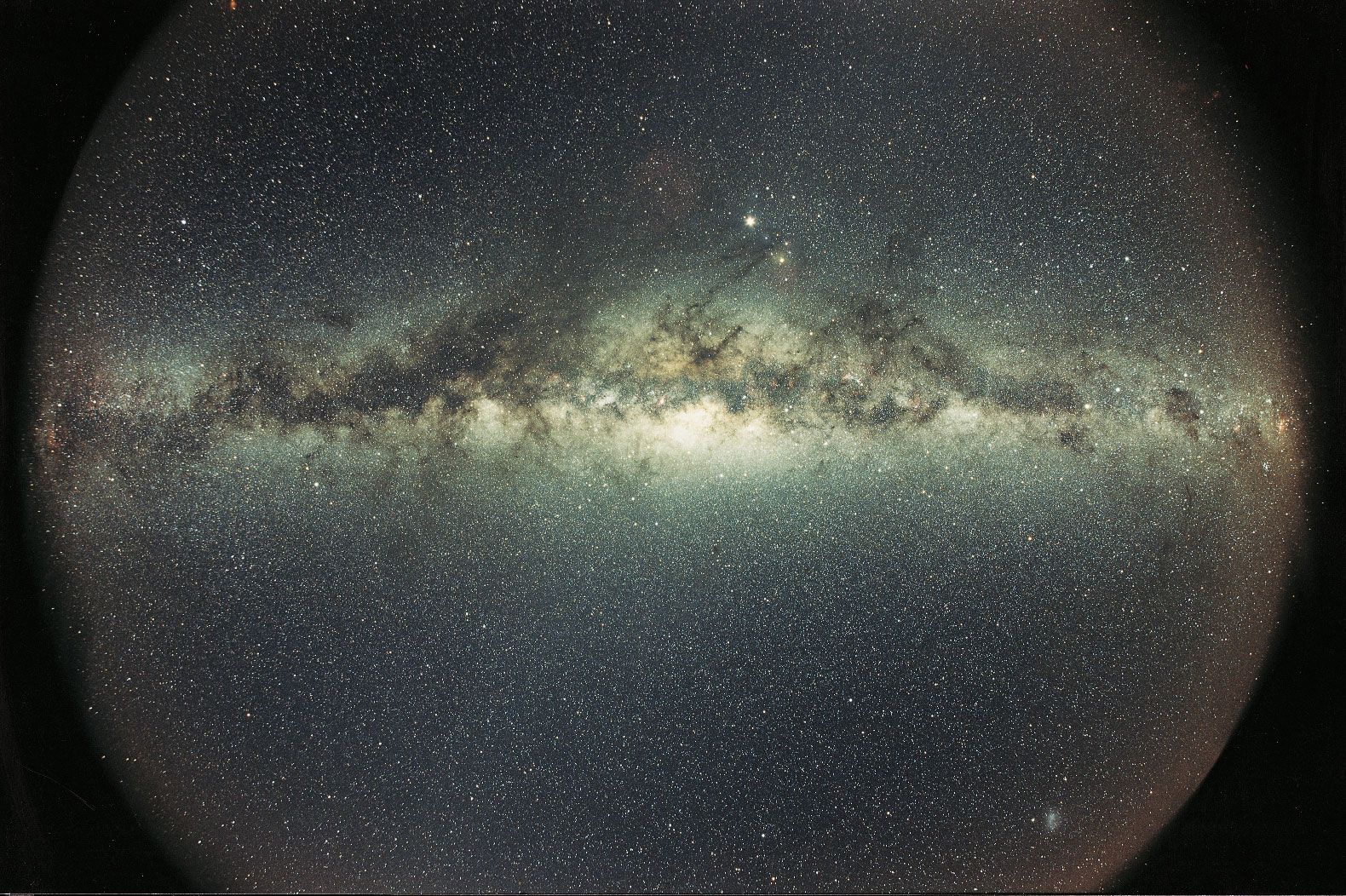
# A Galactic Survivor Narrative: The Large Magellanic Cloud’s Close Encounter with the Milky Way
The Large Magellanic Cloud (LMC), our galaxy’s closest companion, has recently disclosed astonishing insights regarding a tumultuous meeting with the Milky Way that significantly altered its external structure. Utilizing data from NASA’s Hubble Space Telescope, astronomers have accurately gauged the remaining vestiges of the LMC’s halo—a colossal surrounding cloud of gas—and uncovered some unexpected findings, particularly regarding the survival of this crucial feature amidst the gravitational fray.
—
## A Galactic Survivor Narrative
“The LMC is a resilient entity,” states Andrew Fox from AURA/STScI, a principal figure in the Hubble research initiative examining the LMC’s chaotic history. Although it has lost a substantial portion of its gas halo—a vital element in the process of new star formation—the LMC has managed to keep enough to foster ongoing stellar birth. To put it plainly, star creation is far from over for this small but formidable galaxy, which still harbors some gas-laden stellar nurseries.
Fox emphasizes that without the preserved gas, the LMC would have faded into a mere shell, inhabited only by aging, red, giant stars. The substantial quantities of gas that galaxies like the LMC typically possess are crucial for maintaining star formation over vast epochs.
Nevertheless, it’s essential to consider the context. The LMC’s remaining gas halo spans a mere 50,000 light-years—approximately ten times smaller than the halos surrounding similar mass galaxies. To provide context, larger galaxies such as the Milky Way possess gargantuan halos that can extend several hundred thousand light-years. The diminished size of the LMC’s halo vividly narrates its collision with the Milky Way’s far larger and more influential halo.
—
## A Cosmic Hair Dryer
So, how did the LMC forfeit so much of its once-flourishing halo? According to Fox, the Milky Way functioned as a colossal galactic “hair dryer,” blowing away outer gas as the LMC ventured too close. This vigorous stripping process is referred to as *ram pressure stripping*—where gas is forcefully ejected as a galaxy traverses a denser medium.
“I like to envision the Milky Way as this enormous hairdryer, dispersing gas from the LMC as it approaches us,” Fox poetically depicts this celestial interaction. Such ram pressure has substantially reduced the LMC’s halo, but the dwarf galaxy’s relatively significant mass has allowed it to defensively preserve around 10% of its original halo substance.
This preservation is vital for the LMC’s enduring existence as a galaxy capable of evolution. “Even after this devastating interaction, the LMC’s considerable mass, about 10% of the Milky Way’s, enabled it to hold onto this 10 percent fragment of its halo,” notes Sapna Mishra, the study’s lead author. The team’s discoveries underscore how essential a galaxy’s mass is for enduring close encounters with larger cosmic companions.
—
## Gazing Through Cosmic Beacons
Astronomers took advantage of the Hubble Space Telescope’s exceptional ultraviolet (UV) capability, ideally suited for examining diffuse gas formations such as halos. To assess the remnants of the LMC’s halo, researchers utilized light from 28 distant quasars—radiant galactic cores situated millions to billions of light-years away. As the light from these quasars traversed the gas in the LMC’s halo, particular wavelengths were absorbed. This absorption—akin to a cosmic fingerprint—facilitated astronomers in mapping the size and density of the LMC’s halo and identifying its subtle motions.
As this light penetrated the halo remnants, scientists stumbled upon something intriguing: Although small and compact, the remnants could withstand the ongoing passage of the LMC through the cosmos. Similar to a comet’s tail, the stripped gas of the LMC forms a distant “wake” behind it, while the core of the galaxy—which encompasses newly forming stars—persists undisturbed.
—
## Glossary of Cosmic Phenomena
To enhance comprehension of the captivating processes and entities referenced in the study of our galactic neighbor’s gas halo, the following terms are beneficial:
– **Halo**: A vast, cloud-like aggregation of gas and dark matter enveloping a galaxy, essential for galaxy formation and star creation.
– **Ram pressure stripping**: A process that takes place when a galaxy expels gas as it navigates through a dense medium, such as another galaxy’s halo.
– **Quasar**: The exceptionally luminous core of a distant galaxy driven by a supermassive black hole, often serving as background markers for examining intervening cosmic material.
– **Dwarf galaxy**: A smaller galaxy, possessing fewer stars and overall mass in comparison to larger galaxies like the Milky Way, yet capable of containing significant cosmic features like gas halos.
—
## Test Your Knowledge
Having examined the LMC’s galactic encounter